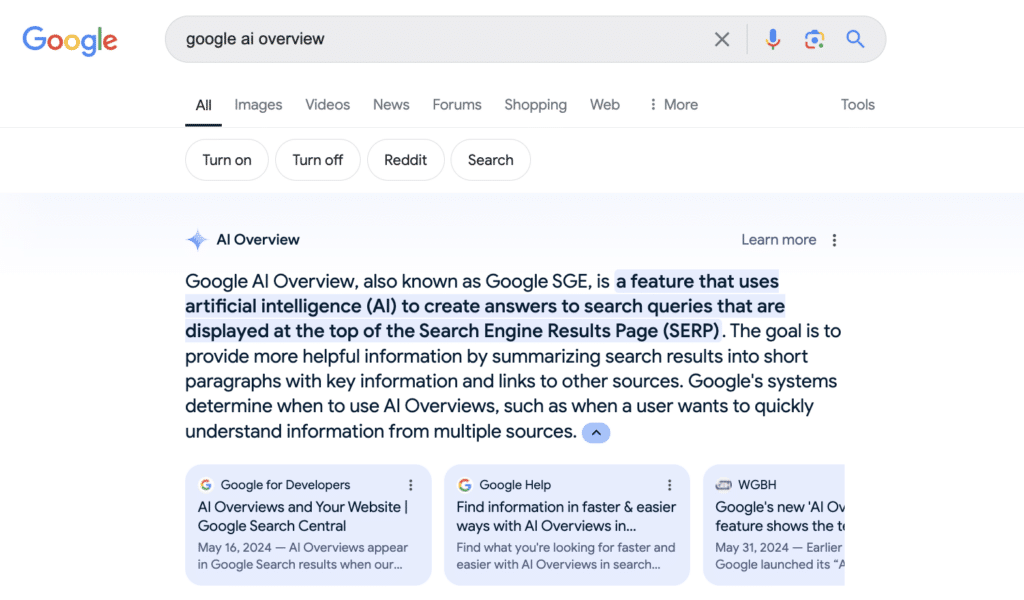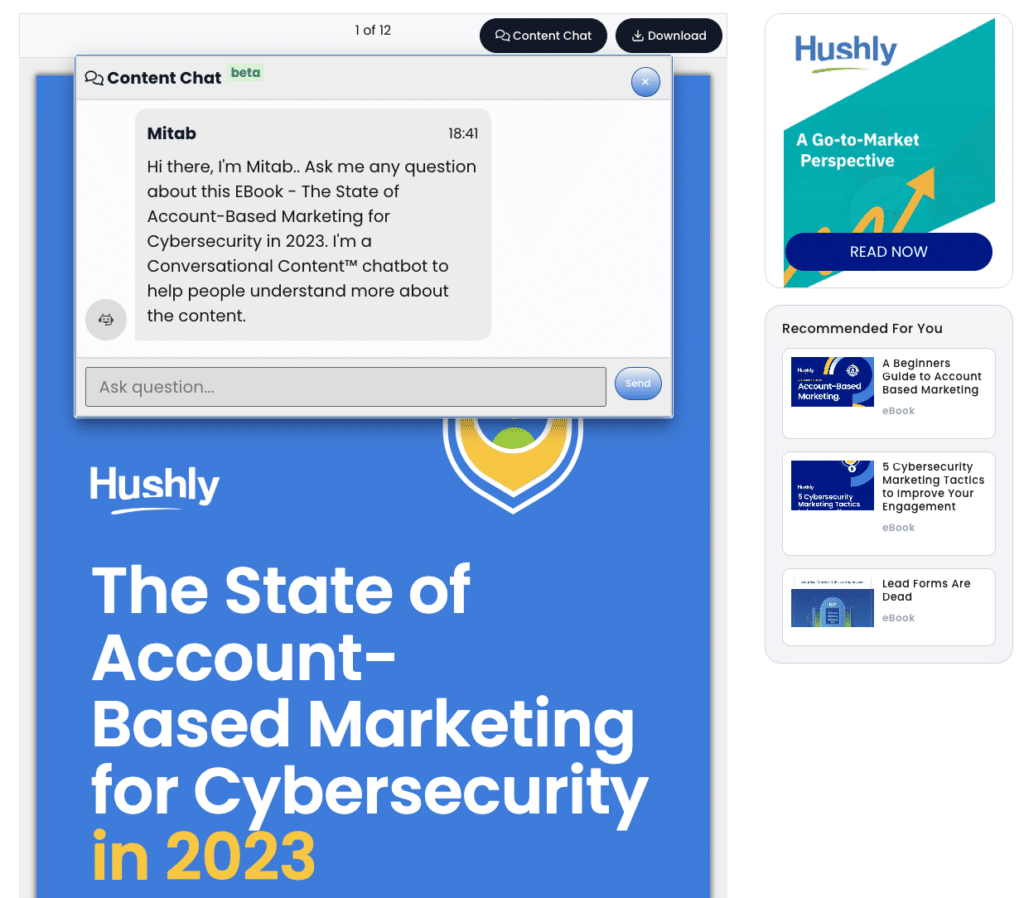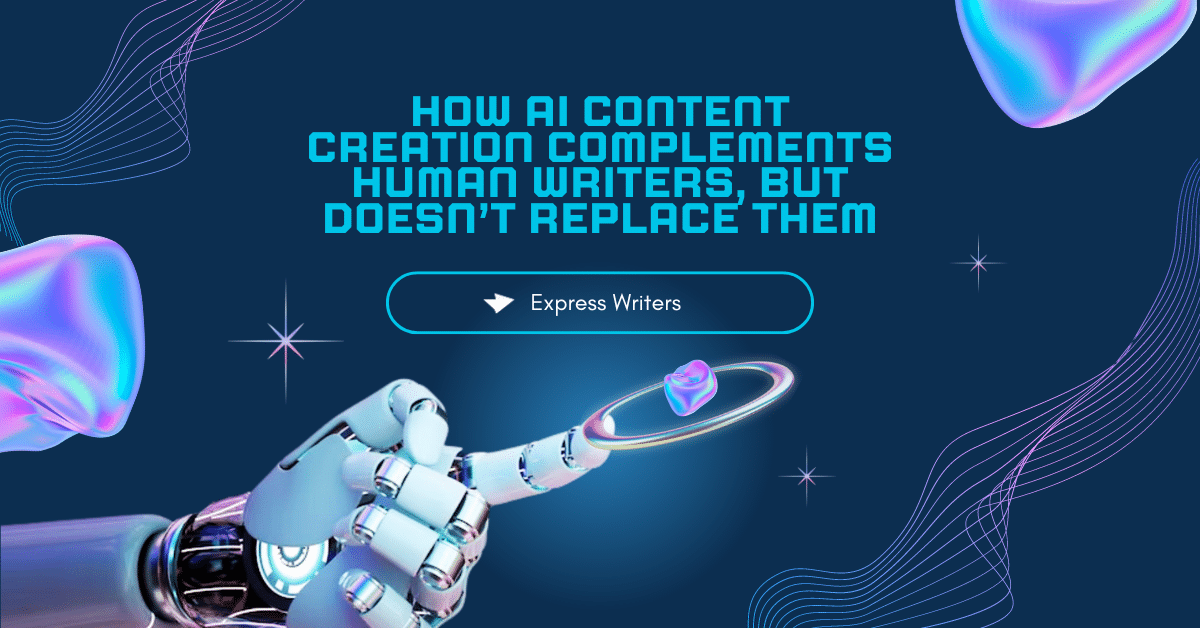You can buy mass-produced pens in stores for less than $1 each, yet people are still willing to spend $50+ for handcrafted pens. Even though technology offers ways to mass produce products, services, and content, audiences are still drawn to the magic of human craftsmanship.
Even with the appeal of human-created products and services, content consumption will be led by AI, just not in the way most people expect. AI isn’t in competition with human writers but will instead help readers discover and consume content more efficiently, making the role of human writers even more crucial to the content-creation process.
Here’s a look at one potential future of content consumption that combines human writers with AI content creation.
What Does AI Not Do
Before diving into the potential of AI, let’s step back a second and look over where AI falls short.
AI Is Limited by Current Content
AI does not create content out of thin air. It requires a starting point, prompt, and data to produce results.
From the prompt, the AI content creator can scour its database to pull responses and generate content from that prompt. However, the content it creates is still limited by what information is available to the AI tool. As a result, AI struggles to produce original ideas.
Human writers can pull new ideas and topics without being prompted. Human creativity and experience is enough inspiration to craft thought leadership.
AI Does Not Have the Full Story
AI follows patterns to deduce the next step. Think of it like the game of Clue. Throughout the game, you try to guess the primary suspect in the mystery. However, you only have part of the story. As people show you their cards, you get closer to narrowing down the suspect.
AI works the same way. When you ask it a question, it can only provide an answer based on the cards in its hand. Sometimes, those cards are from unreliable, outdated, or biased sources, resulting in a biased or inaccurate AI tool.
Human writers know when they only look at some of the cards and can take steps to discover the rest of the information before making claims. For instance, most journalists know that a front cover story of a gossip magazine does not equate to hard facts. Yet, most AI wouldn’t know the difference between an exaggerated human-interest story and a researched fact.
AI Does Not Use Critical Thinking
One of the most challenging parts of AI is its inability to use critical thinking. It cannot correct itself other than looking for variances in patterns. However, it misses small nuances in writing that might not match a usual or natural pattern.
It also struggles with empathy. Humans can identify powerful opportunities to publish timely content or identify times to hold back on making statements that might be in bad taste.
These are just three of the top reasons you cannot replace human writers with AI content creation.
The Relationship between AI and Humans
AI was never meant to shine in the creative arts. While many people demonstrate AI’s ability to write, create art, and compose music, this is not where AI was meant to be most effective.
Placing AI in the role of people is like using a snow shovel to dig in your garden. Yes, a snow shovel may look like a garden shovel. It even digs like a garden shovel. Despite the similarities, a snow shovel was not built to dig dirt, and a garden shovel is highly ineffective at shoveling snow.
Just because AI content generators can create content like people doesn’t mean that’s what you should use. Not when you have highly effective human writers that can infuse so much heart into content.
You should also not throw out AI based on its ability to write any more than you should call a snow shovel useless because it can’t dig an effective hole in the garden. Instead, before incorporating or rejecting AI, you need to dive into what it was built for and its potential to transform how humans interact with content.
How to Use AI for Content Creation without Removing Human Writers
Let’s look at the future of content creation and how AI will play a valuable role in doing what it does best: analyzing and summarizing vast amounts of data.
1. AI Connects Audiences to Relevant Content
Google has used AI for years, helping readers find the most relevant content.
Its algorithm can identify subtle differences in searches and user behaviors to identify what each user would find most relevant. That’s how Google search pulls different search results for someone in Canada and someone in Florida looking for coffee shops near them.
Google can also use its algorithm to understand what someone wants when they search for a driver. For instance, it can distinguish whether they mean someone who operates a vehicle, computer software, or golf equipment, based on past searches, user behavior, and context clues.
Thanks to AI, marketers have search engine optimization and can create content that their audience might find. To take advantage of AI, writers should create optimized content that uses keywords, context clues, and relevant links to associated topics to help Google’s AI-powered algorithm match your content with an appropriate audience.
2. AI Summarizes Longform Content
Have you ever sat in a meeting that took over an hour and left thinking, “That could have been a one-paragraph email?”
That’s how some people feel when they’re looking for information online. Think about the last time you searched for a recipe online. Before seeing a list of ingredients, you had to read through paragraphs of the author’s backstory.
You don’t have time for that.
Many recipe authors understand that not everyone wants the backstory of their family’s famous green bean casserole. That’s why you can often find a button that allows you to jump straight to the recipe.
While that button is not AI-run, Google offers a much more complex “jump to recipe” button. It provides a means for users to jump right to the content they need most.
They call this Google AI Overviews. In searches, this small section appears at the top of the search results page. It is a section AI generated from the top results to help users instantly see their answers rather than sifting through dozens of results.

This new search experience provides a glimpse at the future of AI content consumption, especially for long-form content.
For example, Hushly offers an AI content chat that allows users to interact with content without reading the entire post. You might be familiar with the TL;DR tag for “Too long, didn’t read.” This is a section of posts that summarizes what the post was about for those who didn’t have time to read it all. Other content creators also add key takeaways at the top of their posts.
With AI content chat, users can search their questions similarly to how they search in Google. AI then provides a summarized response pulled from your content, similar to Google’s AI Overviews, allowing readers to conveniently find answers and not leave just because they don’t have time to read your full post.

3. AI Adds to Your Content
When you finish a long webinar, you usually have a Q&A session, allowing your audience to ask follow-up questions. It ensures your audience walks away fully understanding the topic and receiving the insights they need most.
You could have a FAQ section at the end of your content to quickly cover critical points and additional points you didn’t have a chance to cover earlier. Yet, that is not always comprehensive enough.
AI content chats are like a cross between an FAQ page and the Q&A session at the end of a webinar. It can use a user’s behavior on your website and content from other posts to generate answers to any additional questions readers have after finishing your content.
You start the conversation with human-written content, then AI finishes it with data pulled from that human-written content. It’s a tag-team approach to content creation.
The benefit of incorporating AI chat in your content to answer further questions is that readers can find all the information they need on your site and (fingers crossed!) won’t return to Google search to keep looking elsewhere.
4. AI Provides Further Reading Recommendations
The average customer has about eight touchpoints before they agree to a meeting. Depending on the industry, this number can be considerably higher. On average, 71% of B2B buyers read blog posts before purchasing.
Because most website visitors won’t buy your products after reading just one article, you will want visitors to engage with multiple posts that will lead them through the buyer’s journey, resolving their pain points and offering a solution they need.
AI-run resource pages can pull data based on a user’s actions. Remember that AI content chat? An AI resource page will save those questions and provide recommended content based on those questions and browsing behavior to keep users on your page, consuming that human-written content and finding relevant and convenient answers.
5. AI Improves Human Quality
Earlier, we talked about AI’s shortcomings. Now let’s touch on human writer’s shortcomings. The most common shortcoming is a human’s potential to make mistakes. Imperfections are what makes humans so very human, but it’s also what helps make people more relatable to one another.
After all, who do you relate to most on social media? The person with the picture-perfect home or that adult who still has yesterday’s dishes? While a human’s natural and sometimes imperfect way of writing may be more relatable at times, you don’t want to make distracting grammatical errors that take away from your content’s authority and reliability.
These mistakes might be minor grammatical errors or awkward sentences. It might also be writer’s block that keeps a human author from creating fresh content.
AI can fill in those gaps. Humans still lead content creation, but AI picks up on areas where the human writer falls short.
For instance, using tools like Grammarly to correct grammar can improve a writer’s writing quality by catching those pesky missing commas or wordy sentences. ChatGPT can sometimes step in if a writer needs to brainstorm ideas, headers, or outlines for their content. Together, AI and human writers can become a powerhouse of content creation.
Take Your Content into the Future with AI Content Creation
Yes, we just promoted AI for content creation. We aren’t discussing replacing creative roles with a very un-creative robot. We are discussing using AI to help your audience discover and interact with your content more conveniently in a customer-centric approach to content creation.
You still need a quality writer creating content AI can pull from. Yet, you can use AI tools for filling in gaps and improving content consumption. AI can be a powerful tool to help meet your audience’s needs in one place: your website.
Ready for the future of content creation and consumption?
The first stop is a top-quality content shop where human writers create optimized content for the modern website.
Place your first order today.
